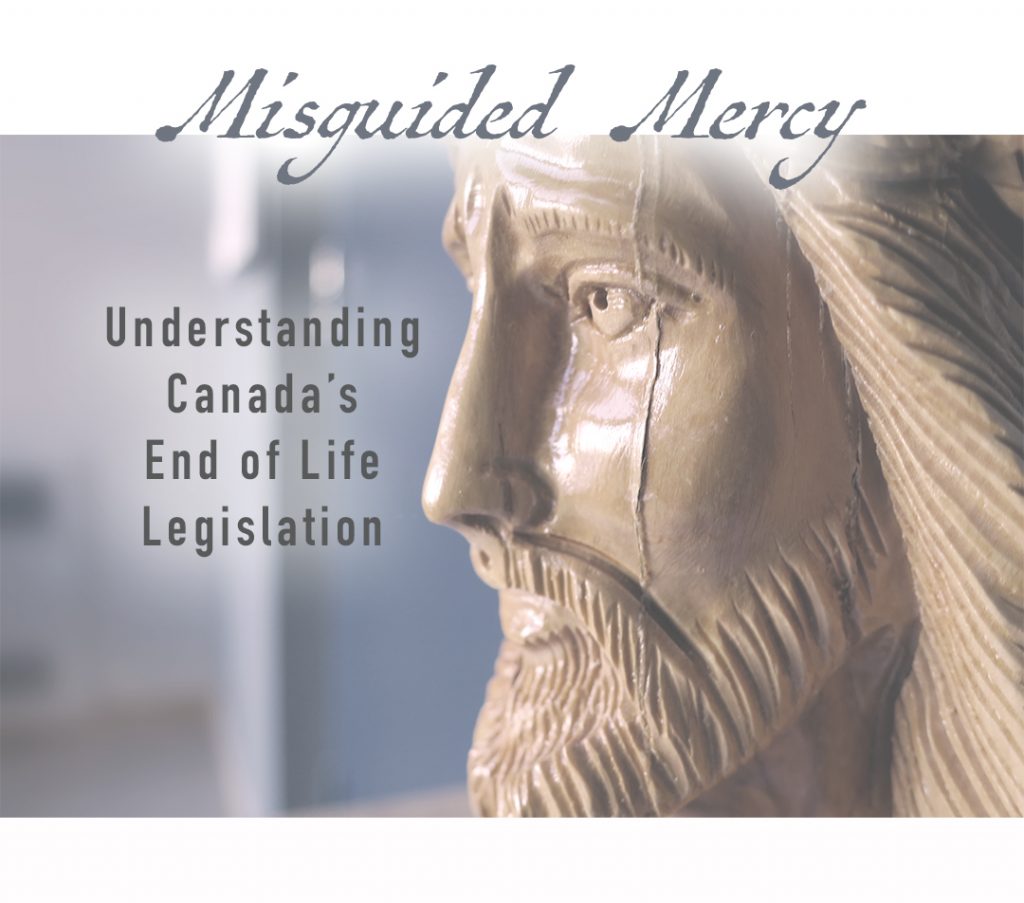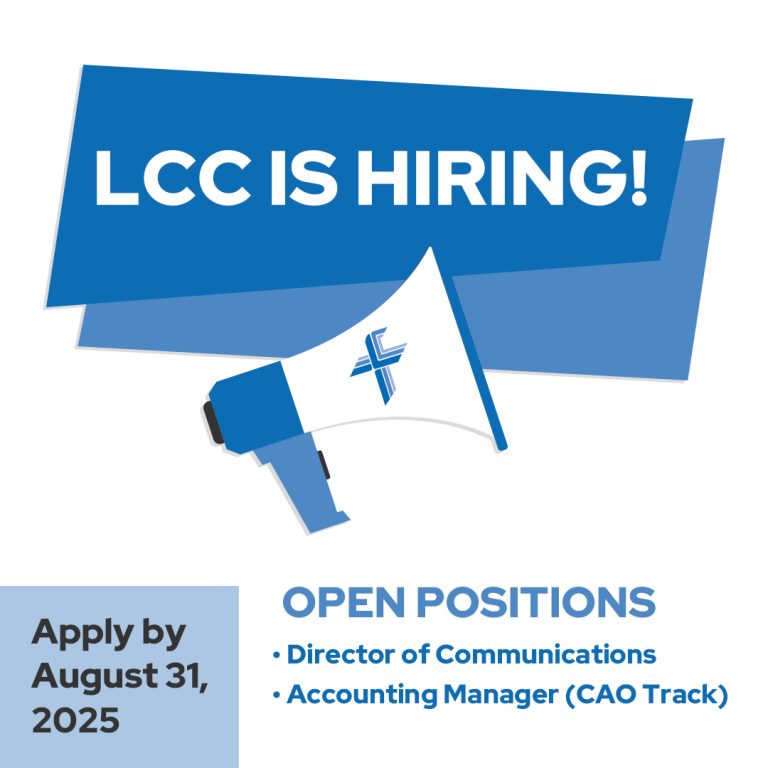Misguided Mercy: Understanding Canada’s End of Life Legislation

by Leah Koetting Block
In 2014, I wrote a feature for The Canadian Lutheran highlighting the imminent legalization of assisted suicide and euthanasia in Canada. In the years since then, not only have these acts indeed become legal, they are becoming increasingly common as time goes by.
As Christians who believe in the sanctity of life, we know that “choosing death” is never right. But if we are to give a faithful witness to family, to friends, and to neighbours on this subject, it is important that we understand the current legal situation clearly.
In Canada today, both assisted suicide and voluntary euthanasia are legal. Assisted suicide takes place when someone ends their life with the assistance of another person—namely by taking lethal drugs provided by a physician. Euthanasia, by contrast, takes place when someone’s life is ended by someone else—again, by the use of lethal drugs, but this time administered by the healthcare worker rather than by the patient themselves.
If you visit the federal government’s website on this issue, however, you will find that the terms “euthanasia” and “assisted suicide” are conspicuously lacking. Instead you’ll read about “Medical Assistance in Dying,” or MAID. MAID is divided into two subcategories: “self-administered” (a euphemism for assisted suicide) and “physician or nurse practitioner administered” (a euphemism for voluntary euthanasia). Because the usual drugs for this purpose tend to be easier to obtain in their injectable forms rather than oral, self-administration is generally more difficult. The vast majority of Canadians who have chosen to die as a result have done so by euthanasia. This is beginning to change as acceptance is growing and regulatory bodies are beginning to loosen the restrictions around the oral forms of these lethal drugs.
The numbers of those who die at home or in hospital are about equal, with a smaller number choosing to die in nursing homes. The largest cohort is the elderly, aged seventy and above, although a not insignificant number of younger people are choosing death as well. There are four interim reports from the government available online that provide statistics on those choosing to die, but the website is open about the fact that the data collection varies from province to province, does not include the territories, and is flat out missing from Quebec for a six month span, because legislation requiring specific reporting wasn’t passed until 2018—three years after assisted suicide and euthanasia were legalized. To date, more than 7,000 Canadians are reported to have died with assistance, but this figure will be lower than the reality.

The legalization of MAID has led to any number of difficulties for those who believe in the sanctity of life in recent years, but one of the least discussed is the use of the term “passive euthanasia”—a term which has become more widely used over the past six years. It means withdrawing medical intervention, and thus allowing someone to die naturally of the already progressing, terminal, underlying condition.
This term has confused many, because it makes it sound like stopping treatment is somehow akin to euthanasia. But the important distinction is that no person is causing death when treatment is ended. The underlying condition is causing death. “Active euthanasia”—the kind of euthanasia legalized by MAID—is instead causing death directly and intentionally by giving or injecting lethal drugs.
The use of the phrase “passive euthanasia” to describe the withdrawal of care at the end of life has caused a great deal of distress and guilt in pro-life families. They wonder if they have “euthanized” their loved one by allowing futile or invasive care to be stopped. The answer is an emphatic no. But, argue some, “Where there’s life, there’s hope, and shouldn’t we do everything possible?” No, not necessarily. That is the art of medicine.
Imagine a Civil War army surgeon examining wounded soldiers in his field hospital. One has a gaping chest wound but still lives. The surgeon examines the wound, but his training and experience tell him that, even if he gives his best effort, this young man will still die—and that the surgeon’s intervention will likely increase the soldier’s suffering in the meantime. The surgeon replaces the bandage, asks the nurse to give the man some laudanum to ease the pain, and takes his limited supply of catgut on to the next patient.
In modern medicine, there comes a time in many cancer journeys when the disease has “learned” to grow in spite of first, second, and even (where they exist) third line therapies. The oncologist examines the scans, but her training and experience tell her that, even if she continues to give this toxic, difficult-to-tolerate chemotherapy, the cancer will continue to grow unchecked. The medications will not only fail to benefit the patient, but they may shorten the patient’s remaining days and will likely increase his suffering. She sits down with the patient and his family, and proceeds to have a difficult conversation, explaining that there is nothing more that can be done to slow down or stop the cancer, and that now the focus must be on comfort.
Despite antibiotics, transfusions, breathing tubes (often referred to as “life support”), and top-notch intensive care, some infections still overwhelm the body’s defences. There are signs that this is happening—uncontrolled bleeding and multi-organ failure, for example—and once this process begins, it can’t be reversed. The intensive care doctor, recognizing that prolonged treatment will not change the outcome, may suggest to the family that the breathing tube be removed, the medications be stopped, and the patient be made comfortable while passing away.
What do these cases have in common?
They are motivated first by whether or not the treatment will alter the outcome favourably, and second by whether or not the treatment is adding to the patient’s suffering. A further consideration, which is unpopular but still must be mentioned, is that our healthcare resources are not unlimited. Modern medicine still has a “limited supply of catgut,” and we have to be good stewards of our resources.
Now, as long as the physician is motivated in this order, there is no problem. The patient’s life will always come first, and the physician will continue to offer care so long as it will continue to improve the outcome.
But what if physicians turn that list on its head?
What happens if they are motivated first by the scarcity of healthcare resources; second, by the patient’s suffering; and only third, by the futility of treatment? It’s not difficult to extrapolate the outcome. In a world with these priorities, then certainly, some lives will be declared more “deserving” of resources than others. How valuable is the patient to society? Are they aware of what’s happening to them or are they incapacitated by dementia? Do they have a disability? Will they make a “full” or “meaningful” recovery? Or will they continue to be a “drain” on society’s resources? And possibly, moved by their own misguided sense of compassion, physicians may see the patient’s suffering as intolerable and feel that death would be better. They may sincerely feel they are acting in a patient’s “best interests.”
Seen through this framework, atrocities such as the euthanization of elderly demented patients without asking or even telling their families, allowing healthy young people to choose death solely because of psychological suffering, and withholding food and water from people with dementia—situations which regularly occur in Belgium, the Netherlands, and parts of the United States—at least make a sort of logical sense, even if they don’t make moral sense. (For more information on what is happening all over the world, visit the Euthanasia Prevention Coalition of Canada’s website at www.epcc.ca. Become a member. Spread the word.)
Unfortunately, these things happen in Canada too. I’ve heard terrible stories from real people in which physicians have allegedly withdrawn or withheld for reasons other than futility of treatment, despite the objections of family members.
In a world where doctors kill, how can patients trust their doctors?
This is why it is so dreadful that physicians are made the executioners of “Medical Assistance in Dying.” How can you know what is motivating your physician? How can you know whether you, the patient, top his or her list of priorities? In a world where doctors kill, how can patients trust their doctors?
Even now, there are efforts underway to expand euthanasia and assisted suicide in Canada. Courts have struck down the requirement that people seeking assisted suicide be terminally ill. Lobbyists want to see the legislation broadened to include minors and the mentally ill, as well as those wishing to make advance requests should they become incapacitated.
So what can you do?
You can make your voice heard. A silent, disapproving majority can effect no change. Join Lutherans for Life-Canada. Join the Euthanasia Prevention Coalition of Canada. Write to your members of Parliament and the Legislative Assembly, every time you hear something in the news that shocks and appalls you.
Continue to be the physical hands and feet of Christ. Studies show that people choose assisted death not because of intractable physical pain, but because of existential suffering: the loss of autonomy, the fear of burdening loved ones, loneliness. We can help with this. Be practical in your help. Sit with shut-ins. Visit the sick.
Continue to be the physical hands and feet of Christ. Studies show that people choose assisted death not because of intractable physical pain, but because of existential suffering: the loss of autonomy, the fear of burdening loved ones, loneliness. We can help with this. Be practical in your help. Sit with shut-ins. Visit the sick. (For more on this, see my article “Hands of Mercy” in the May/June 2014 issue of The Canadian Lutheran or online.)
Finally, engage people on this uncomfortable topic. It will lead to difficult conversations. Feelings run high. Many people’s experiences on both sides of the issue involve personal tragedies. We as Christians are called to uphold the sanctity of life—but we are called to do it with gentleness and compassion.
As Christians, we know that death is not the end. Your neighbours may not have the same hope.———————
Dr. Leah Koetting Block is an award-winning physician practising in rural Manitoba.



